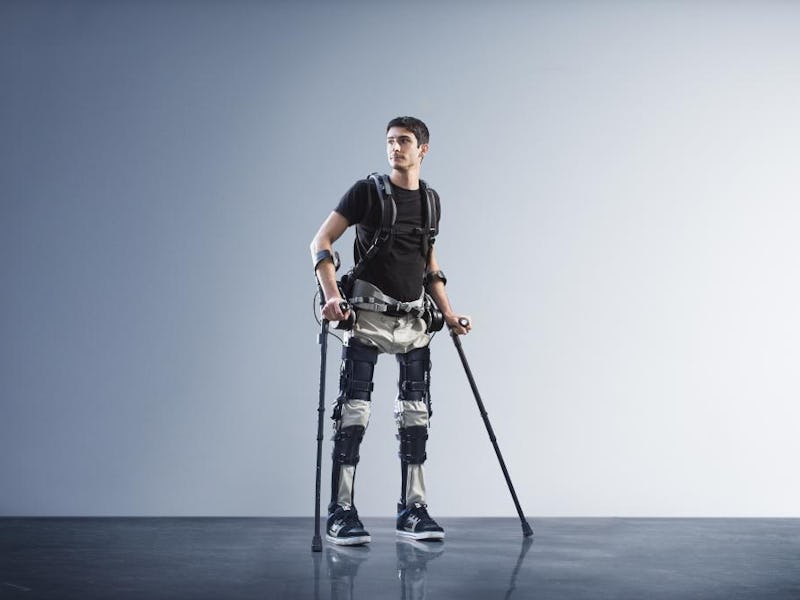This $40,000 Exoskeleton Suit Helps the Paralyzed Walk Again
The Phoenix weighs 27 pounds and lets the user walk up to 1.1 miles per hour.

Homayoon Kazerooni, CEO of SuitX, understands that he can’t truly fix the injuries of the paralyzed. But he can do the next best thing — provide a robotic exoskeleton suit that gives them a chance to get up and out of their wheelchair.
SuitX’s Phoenix is a modular, adjustable exoskeleton available now for $40,000. Powered by a battery pack backpack, it weighs 27 pounds and allows the user to walk up to 1.1 miles per hour. By pressing buttons integrated into a pair of crutches, the user of the device can control the movement of their legs. The legs are strapped within the exoskeleton, complete with small motors attached to standard orthotics located at the hips and knees.
Steven Sanchez, pictured above, has been traveling the world on behalf of SuitX, demonstrating the Phoenix. Sanchez was immediately paralyzed from the waist down after a BMX accident — he says that while using his wheelchair isn’t so bad, the Phoenix means an essential reprieve.
Sitting all day can lead to dangerous pressure sores. Before he came across the Phoenix he had decided to kill the nerves in his hands so it would be easier to walk around with crutches.
The MIT Technology Review notes that while the Phoenix is not the lightest exoskeleton in existence, nor the cheapest, “it’s easily among the lightest and cheapest exoskeletons that can restore a person’s mobility.” This is because of its biomechanical design, focused more on mobility and user-friendliness.
“My idea and philosophy is less is more,” Kazerooni told Fast Company. “We want to give a minimal amount to the user to be independent. We’re not saying this is a complete [mobility] machine, but if we come up with something that’s robust and simple — walks, stops, sits, and stands — that’s hugely enabling!”
Kazerooni is the first to admit that $40,000 is “way too expensive.” Within the next few years, he hopes that the Phoenix will be closer to $10,000. His major ambition, however, is to build a version of the Phoenix that can be adapted for children.
In the meantime, Sanchez — who says that his preference for the Phoenix comes down to the fact that, while expensive, it is much less expensive than the other options out there — will continue to work with SuitX, helping optimize the machine that focuses on “cleverness” instead of power.
“I am not the robot,” Sanchez says. “I wear the robot.”